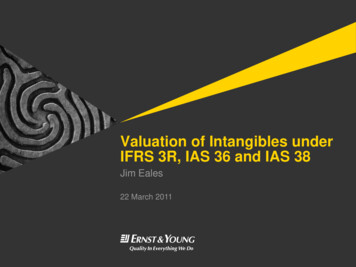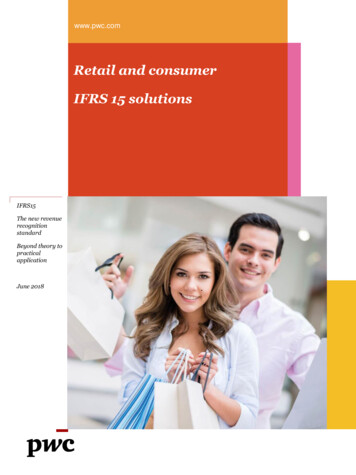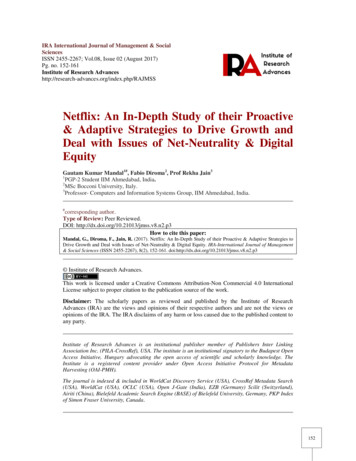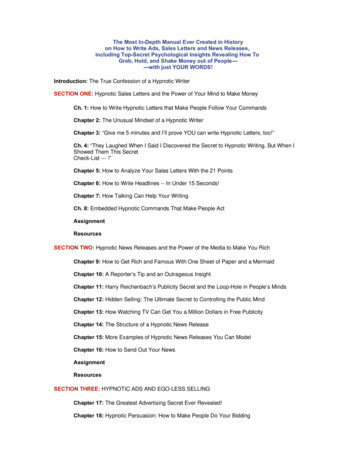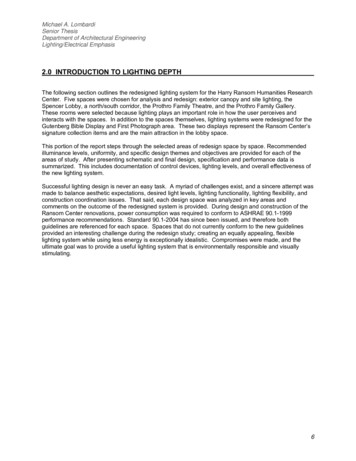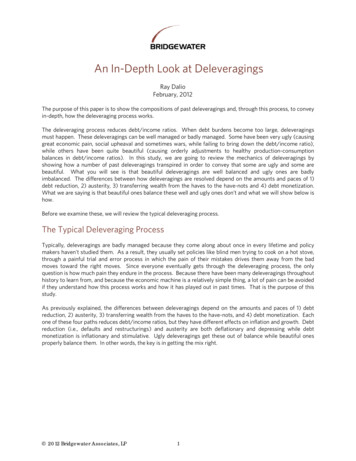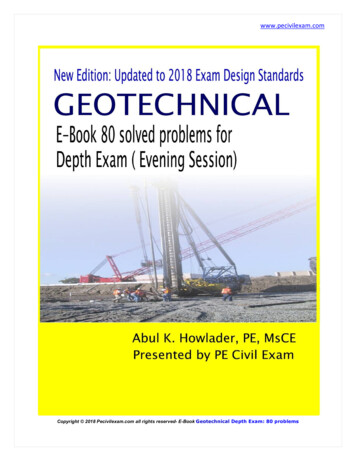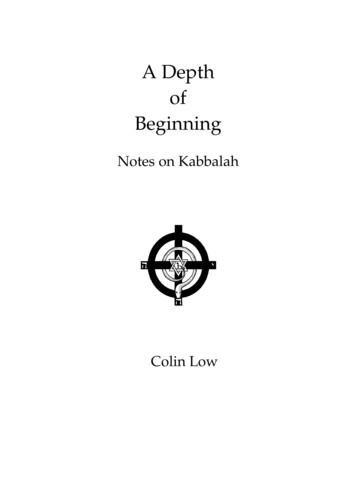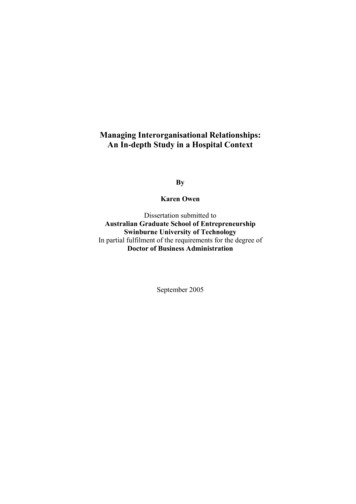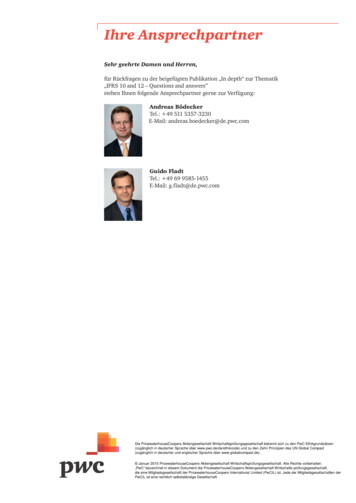
Transcription
Ihre AnsprechpartnerSehr geehrte Damen und Herren,für Rückfragen zu der beigefügten Publikation „In depth“ zur Thematik„IFRS 10 and 12 – Questions and answers”stehen Ihnen folgende Ansprechpartner gerne zur Verfügung:Andreas BödeckerTel.: 49 511 5357-3230E-Mail: andreas.boedecker@de.pwc.comGuido FladtTel.: 49 69 9585-1455E-Mail: g.fladt@de.pwc.comDie PricewaterhouseCoopers Aktiengesellschaft Wirtschaftsprüfungsgesellschaft bekennt sich zu den PwC-Ethikgrundsätzen(zugänglich in deutscher Sprache über www.pwc.de/de/ethikcode) und zu den Zehn Prinzipien des UN Global Compact(zugänglich in deutscher und englischer Sprache über www.globalcompact.de). Januar 2015 PricewaterhouseCoopers Aktiengesellschaft Wirtschaftsprüfungsgesellschaft. Alle Rechte vorbehalten.„PwC“ bezeichnet in diesem Dokument die PricewaterhouseCoopers Aktiengesellschaft Wirtschafts prüfungsgesellschaft,die eine Mitgliedsgesellschaft der PricewaterhouseCoopers International Limited (PwCIL) ist. Jede der Mitgliedsgesellschaften derPwCIL ist eine rechtlich selbstständige Gesellschaft.
www.pwc.co.ukIn DepthA look at current financialreporting issuesIFRS 10 and 12 - Questions andanswersJanuary 2015– update
ContentsIntroduction. 4Section A – Power . 5Part I: Relevant activitiesQuestion A1 – Assessing power when different investors control activities in differentperiods . 5Question A2 – Re-assessment of power . 5Question A3 – Can decisions made when an entity is formed be considered asrelevant activities? . 5Part II: Potential voting rightsQuestion A4 – Can an option provide power when the option holder does not have theoperational ability to exercise? . 6Question A5 – Can an option provide power when the option holder does not havethe financial ability to exercise the option? . 6Question A6 – Can an option provide power if it is out of the money? . 7Question A7 – What types of rights to acquire or dispose of shares might representpotential voting rights? . 7Question A8 – In situations where one investor holds a call option and another holds aput option, do these represent potential voting rights which might providepower over an investee? . 8Question A9 – Do ‘tag along’ rights represent potential voting rights which might provideinvestors with power over an investee? . 8Question A10 – Do ‘Russian roulette’ provisions in shareholder agreements representpotential voting rights which might provide investors with power over aninvestee? . 8Question A11 – Do ‘drag along’ rights held by multiple investors represent potentialvoting rights which might provide investors with power over aninvestee? . 9Part III: Structured entitiesQuestion A12 – Contingent power. 10Question A13 –Can reputational risk give control? . 10Question A14 – Can a change in facts and circumstances cause an entity previouslyconcluded to be a structured entity to no longer meet those criteria?. 11Question A15 – Who should consolidate a carried interest partnership set up by an assetmanager for the purposes of remunerating its employees? . 11Section B – Exposure to variability . 13Question B1 –What types of instruments absorb variability from an investee, andwhich instruments create variability in an investee? . 13Question B2 –Does a contract with an entity create or absorb variability? . 13Question B3 – What assets should an investor look to in assessing control? . 14Question B4 – When assessing control over a structured entity (“SE”), should theassessment of power and exposure to variability be based on theaccounting assets, the legal assets or economic exposures of the SE . 15Question B5 – When a structured entity (“SE”) leases out an asset, what are the relevantactivities of the SE?. 15PwC: Practical guide to IFRSs 10 and 12 – Questions and answers1
Question B6 – Does an option to purchase an asset at the end of the lease term providecontrol over a structured entity (“SE”)? . 16Question B7 – Does an option to extend a lease provide control over a structured entity(“SE”)? . 16Question B8 – How should the exposure to the variability of a structured entity (“SE”)which holds a financial asset be assessed?. 16Question B9 – When an investor’s exposure to variable returns includes fees for servicesit provides to the investee, should the associated costs it incurs to deliverthose services be included in the assessment of exposure to variablereturns?. 17Section C – Principal-agent analysis . 18Question C1 – Determination of the principal. 18Question C2 – Is an annual re-appointment requirement considered to be asubstantive right? . 19Question C3 – Is a removal right with a one-year notice period requirement asubstantive removal right? . 19Question C4 – Is an intermediate holding company an agent of its parent? . 20Question C5 – When power and benefits are split between two parties in a group, whatfactors should be considered in determining whether one is the de factoagent of the other? .20Question C6 – Employees as de facto agents. 22Question C7 – If a decision-maker is remunerated at market rate, does this meanthat the decision-maker is an agent? . 22Section D – Silos24Question D1 – What indicators should be considered in determining whether a breach ofa silo is substantive? . 24Question D2 – When assessing whether a silo is a deemed separate entity, does the entityneed to consider whether the silo’s assets are legally ring-fenced? . 24Question D3 – Can an entity achieve ring-fencing for the purposes of IFRS 10 viacontract, if specific liabilities are exempt from the ring-fence under locallaws?. 25Question D4 – Does the presence of a credit enhancement mean the silo is not a deemedseparate entity? . 25Question D5 – Is the definition of a silo satisfied where a silo’s creditors have a claimagainst the general assets of the silo entity, if a contingent event occurs? 26Question D6 – Where a silo’s ring-fencing can be breached in the event of fraud, will thesilo be a deemed separate entity? . 27Section E – Disclosure . 28Question E1 – Do holdings in a structured entity purchased for trading purposes meetthe definition of ‘interest’ under IFRS 12? . 28Question E2 – Does the definition of an ‘interest in another entity’ for IFRS 12 disclosurepurposes include non-financial benefits? . 28Question E3 – Does the requirement in IFRS 12.B26(b) to disclose losses incurredduring the reporting period for interests in unconsolidated structuredentities apply to interests disposed of during the period? 29Question E4 – Should the assessment of whether a non-controlling interest (“NCI”) in asubsidiary is material be performed on the net equity interest or on thegross assets and liabilities associated with the interest? . 29PwC: Practical guide to IFRSs 10 and 12 – Questions and answers2
Question E5 – Where there is a subgroup and there is non-controlling interest (“NCI”)within the sub-group’s parent company, should the reporting entity’sassessment of whether the NCI is material be based on the NCI share in theindividual parent only or in the entire sub-group? . 29Question E6 – Are investment entities with no subsidiaries able to use the disclosureexemption in IFRS 12, para 21A for investments in associates and jointventures? . 30Section F – Transition provisions . 31Question F1 – What is the ‘date of initial application’? . 31Question F2 – Application of previous standards . 31Question F3 – Limitation of restatement of comparatives . 31Section G – Other issues.32Question G1 - What factors should be considered in determining whether a structure is anentity? . 32Question G2 - Can an entity which invests in items other than financial instruments meetthe definition of an investment entity? . . 32Section H – Industry issues .34Question H1 - When should the restructuring of a loan result in consolidation by thelender? . 34Section I – Comprehensive case studies . 41Case study 1 – Assessing de facto control for an operating entity .Case study 2 – Assessing control with put and call options .Case study 3 – Assessing control for a debt restructuring structured entity withlimited activities .Case study 4 – Assessing control of an issuer of commercial mortgage-backedsecurities managed by a third-party servicer acting on behalf ofinvestors .Case study 5 – Assessing control of an issuer of credit-linked notes with limitedactivities and derivatives that enhance risk .PwC: Practical guide to IFRSs 10 and 12 – Questions and answers41424449533
IntroductionIFRS 10 and IFRS 12 were issued inMay 2011. Any new standard presentschallenges and questions when preparersof financial statements startimplementation. IFRS 10 retains the keyprinciple of IAS 27 and SIC 12: all entitiesthat are controlled by a parent areconsolidated. However, some of thedetailed guidance is new and may resultin changes in the scope of consolidationfor some parent companies. Experiencesuggests that the new requirements willhave the greatest impact on consolidationdecisions for structured entities (or‘special purpose entities’) and for pooledfunds managed by a third party.This publication sets out our views onsome of the most common issues thatarise during the implementation of thenew standards. We trust you will find ithelpful.For further guidance on IFRS 10, pleasesee our ‘Practical guide to IFRS:Consolidated financial statements –redefining control’ and the supplementfor the asset management industry (bothon pwc.com/ifrs and pwcinform.com).PwC: Practical guide to IFRSs 10 and 12 – Questions and answers4
Section A – PowerPart I: Relevant activitiesQuestion A1 – Assessing power whendifferent investors control activities indifferent periodsAn investor has power over an investeewhen the investor has existing rights thatgive it the current ability to direct therelevant activities of the investee(IFRS 10.10). Can an investor have powercurrently if its decision-making rightsrelate to an activity that will only occur ata future date?X and Y set up a new company toconstruct and operate a toll road. X isresponsible for the construction of thetoll road, which is expected to take twoyears. Thereafter, Y has authority on allmatters related to toll road operation. Isit possible for Y to have power over thecompany during the construction phasealthough X is responsible forconstructi
PwC: Practical guide to IFRSs 10 and 12 – Questions and answers 4 Introduction IFRS 10 and IFRS 12 were issued in May 2011. Any new standard presents challenges and questions when preparers of financial statements start implementation. IFRS 10 retains the key principle of IAS 27 and SIC 12: all entities that are controlled by a parent are consolidated. However, some of the
